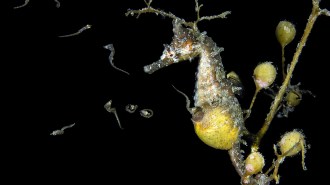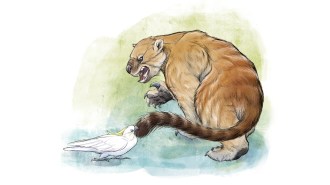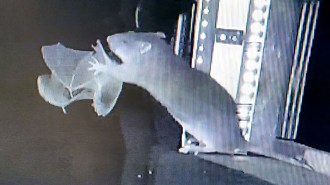In a first, these bats were found to have toes that glow
Hairs on the feet of Mexican free-tailed bats fluoresce under UV light
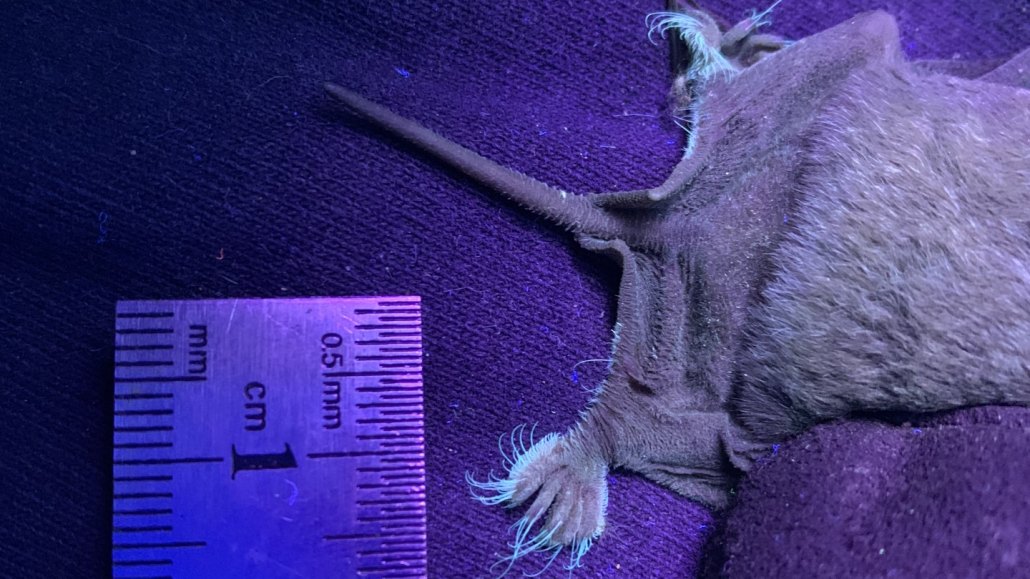
Under an ultraviolet light, toe structures on this Mexican free-tailed bat glow a brilliant cyan.
F. Gual-Suárez
You’ve heard of jazz hands? Well, these bats have glow toes.
When ultraviolet light shines onto the Mexican free-tailed bat’s extraordinarily hairy toes, they light up like a Christmas tree. That’s because the animals have bristly structures that are capable of UV-induced photoluminescence, researchers report August 8 in Mammalian Biology. The finding marks the first time photoluminescent structures have been reported in live bats, and places Mexican free-tailed bats on an ever-growing list of creatures that can absorb UV light and reemit it at a different wavelength.
Biologist Fernando Gual-Suárez says he will always remember the moment he heard a colleague utter, “Is that normal? Do the feet usually look like that?”
He and his colleagues had been catching Mexican free-tailed bats (Tadarida brasiliensis) outside of a well-known roost in southern Mexico City. It was January 2021, and the night before, the researchers had used long strands of fine filaments known as mist nets to capture bats about 20 to 30 kilometers to the north, then dusted them with a special powder that shines under UV light. The hope was to later detect that powder on bats sampled in the south, proving that the animals were moving between the two locations.
“We failed at that,” says Gual-Suárez, of the National Autonomous University of Mexico in Mexico City. However, while searching for signs of the powder with their UV flashlights, the team stumbled upon something even cooler on the powderless bats — glow-in-the-dark toes.
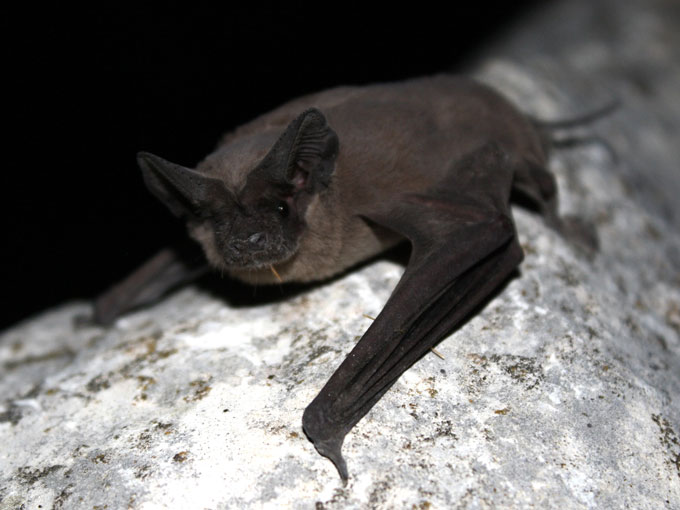
To be sure the photoluminescent footsies weren’t a result of some residue or a local aberration, the researchers looked for and found similarly bright structures on 25 live Mexican free-tailed bats at both sites, as well as on one female bat captured more than 700 kilometers to the north. The team also tested museum specimens. These lacked photoluminescence in the foot structures, but glowed all over in a dull green tone — probably as a result of chemicals used in the preservation process and physical changes that occur over time, the researchers report.
“I applaud Gual-Suárez et al‘s paper on both examining live animals, and comparing how the results would have born no relation to nature if they’d have used museum specimens instead,” says Linda Reinhold, a zoologist at James Cook University in Cairns, Australia. “That’s good science.”
Scientists have found the same phenomenon in everything from wasp nests and platypuses to tardigrades (SN: 9/2/21; SN: 11/6/20; SN: 10/13/20). What’s particularly strange is that, while animals such as flying squirrels glow essentially from head to toe under UV light, in Mexican free-tailed bats, it’s just the toes.
And the toes themselves are already considered rather bizarre.
Mexican free-tailed bats belong to a family known as Molossidae, and all the members of this family “have what are termed ‘spoon-shaped bristles’ along the outer edges of toes 1 and 5,” says Nancy Simmons, a morphologist at the American Museum of Natural History in New York City. “Nobody has ever known why molossids have these bristles in the first place.”
Simmons, a bat expert not affiliated with the study, notes that it’s precisely these bristles that glow under UV light.
As to what purpose the glowing toes serve, function is difficult to prove in any animals that photoluminesce. It’s not yet known whether the bats can perceive the reemitted wavelengths that appear as a brilliant cyan to the human eye. And as nocturnal creatures, these bats would encounter UV light mostly only at dusk, dawn and nights where the moon is unobstructed by clouds.
But the researchers note that because this species migrates thousands of kilometers at night, and lives in colonies of up to millions of individuals, it would make sense if the light-up bristles served some sort of role in nighttime communication.
“We need to test it in the lab,” says Rodrigo Medellín, an ecologist also at the National Autonomous University of Mexico. “We’re playing with the idea of having a captive colony of Mexican free-tails and maybe shaving the bristles on the feet to see what they do. This is just scratching the surface of a very deep and very long iceberg that nobody knows anything about.”




